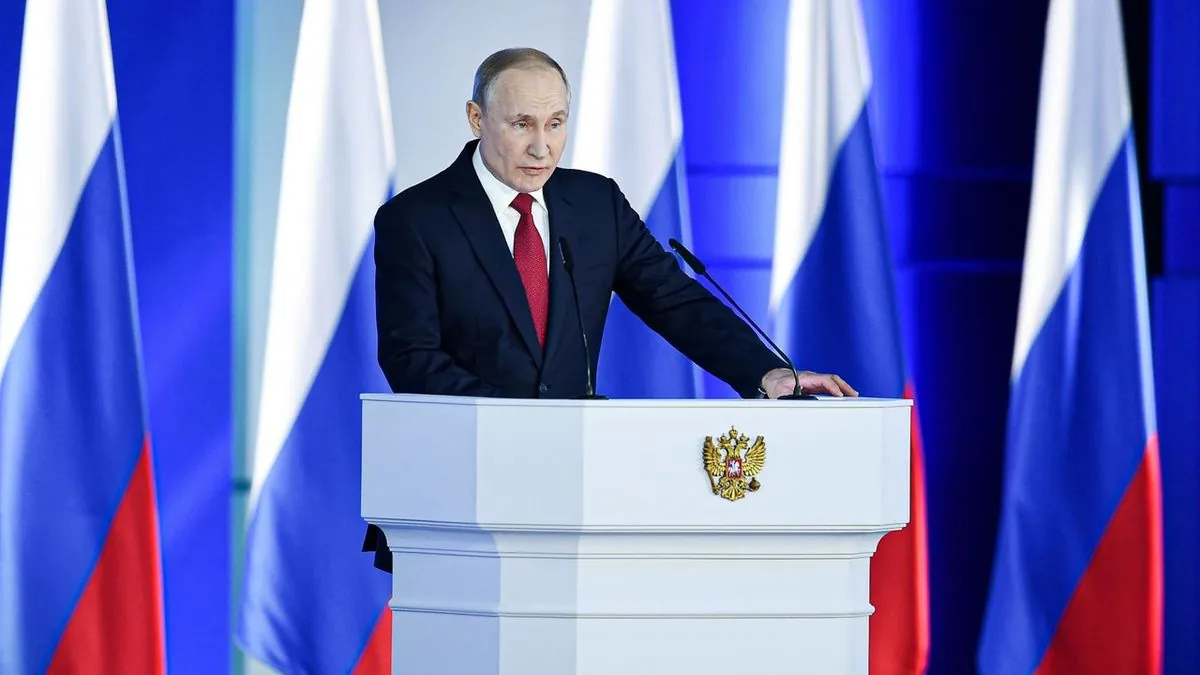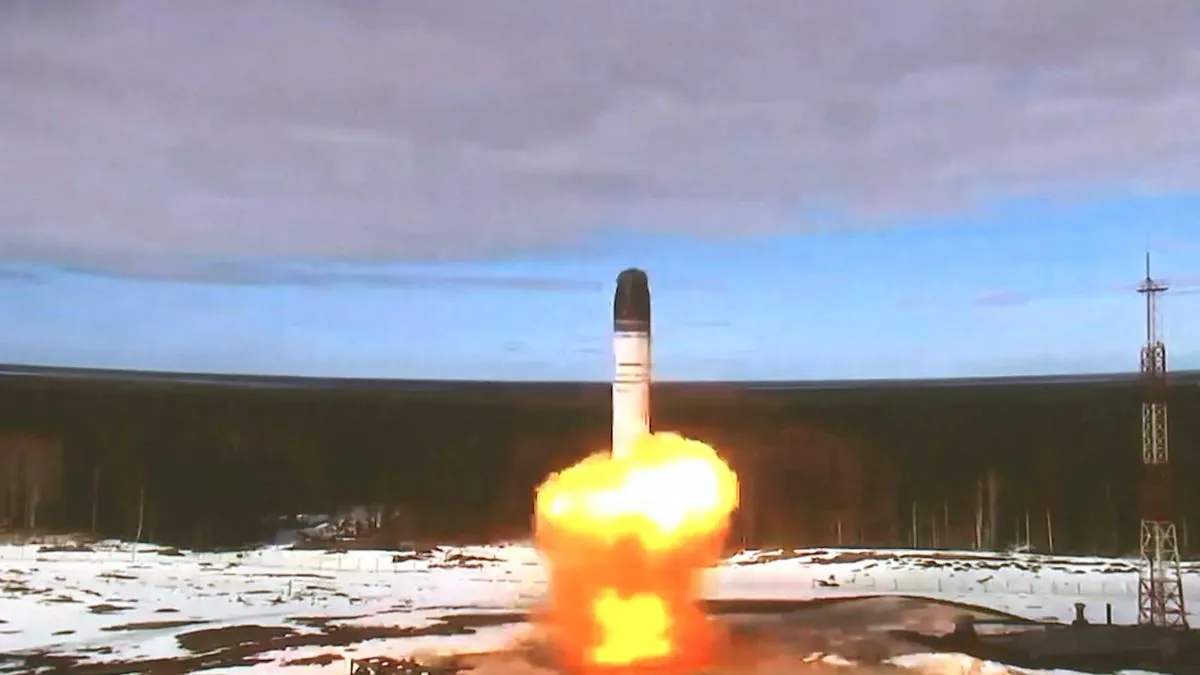Putin Expands Nuclear Use Scenarios, Sparking Global Debate
Russian President Vladimir Putin has broadened the conditions for potential nuclear weapon use, coinciding with Ukrainian President Zelenskiy's US visit. The move has ignited international discussions on its implications and credibility.

Vladimir Putin has expanded Russia's nuclear doctrine, outlining new scenarios for potential nuclear weapon use. This policy shift, announced on September 27, 2024, has sparked a global debate on its implications and credibility.
The timing of this announcement coincides with Volodymyr Zelenskiy's visit to the United States, raising questions about Russia's motivations. Ukraine has accused Russia of resorting to "nuclear blackmail," while some Western observers express skepticism about the reality of Russia's red lines.
Putin's new policy extends the list of circumstances that could trigger a nuclear response, including major cross-border conventional attacks involving aircraft, missiles, or drones. It also considers nuclear powers supporting such attacks as parties to the conflict.

This policy change comes amid ongoing discussions about providing Ukraine with long-range Western missiles. Nikolai Sokov, a former Soviet and Russian diplomat, interprets Putin's message as a clear warning against such actions, stating, "Don't make a mistake - all these kind of things may mean nuclear war."
The announcement has reignited debates about nuclear deterrence, a concept developed during the Cold War. Russia currently possesses the world's largest nuclear arsenal, with approximately 6,000 warheads, followed by the United States with about 5,500.
Some Western officials and analysts view Putin's statement with skepticism. Andreas Umland, an analyst at the Swedish Institute of International Affairs, suggests it may be a "psychological PR operation" designed to intimidate Ukraine's supporters.
However, others caution against dismissing the threat entirely. Fabian Hoffmann, a defense expert, advises monitoring for concrete signs of nuclear preparations, such as removing warheads from storage or readying delivery systems.
The policy change also extends Russia's nuclear umbrella to cover Belarus and lowers the threshold for nuclear use. Previously, the doctrine mentioned nuclear use in response to threats to "the very existence of the state." Now, it includes scenarios posing a "critical threat to our sovereignty."
"We see that Western adversaries no longer respect any 'red lines', believing that any acts to arm Ukraine and Western-assisted strikes against facilities deep inside Russian territory will not be met with nuclear escalation."
This shift in policy has been welcomed by Russian nationalists and war bloggers, some of whom have long advocated for the use of nuclear weapons to force Ukraine's capitulation.
The international community continues to grapple with the implications of Putin's announcement. The Nuclear Non-Proliferation Treaty, signed in 1968, and the more recent Treaty on the Prohibition of Nuclear Weapons, which entered into force in 2021, underscore global efforts to prevent nuclear proliferation and use.
As tensions persist, the world watches closely for any signs of escalation. The concept of "mutually assured destruction," which emerged in the 1960s, remains a sobering reminder of the potential consequences of nuclear conflict.


































